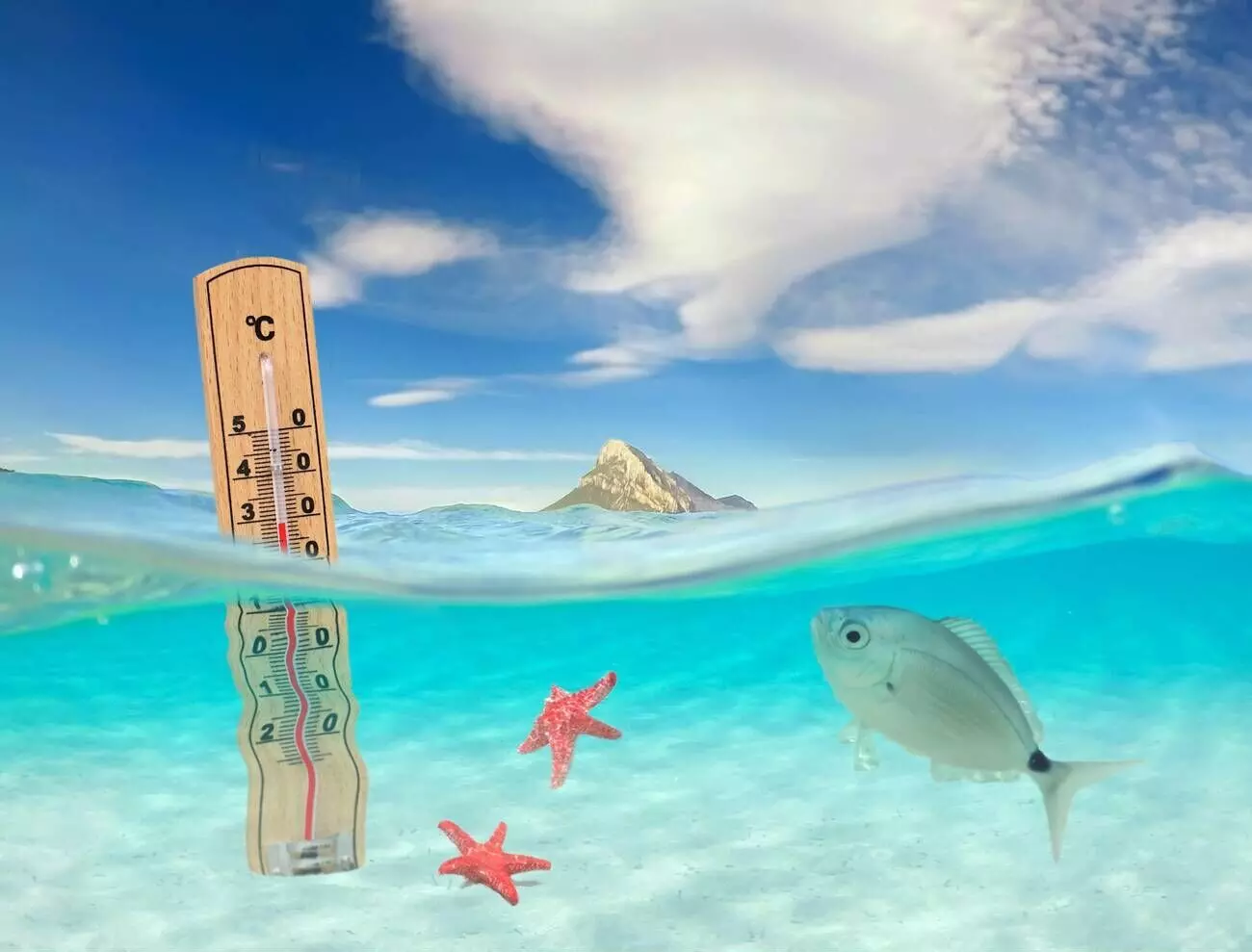
The Indian Ocean's Rising Fever
Highlighting the Heatwave Crisis and its Global Implications
The Indian Ocean, a vital life source for millions, is silently approaching a climate crisis. The culprit? An unprecedented heatwave, skimming the surface and penetrating to depths of 2,000 metres. The heat content of the Indian Ocean is skyrocketing at an alarming pace of 4.5 zeta joules per decade, a trend that threatens to disrupt ecosystems, economies, and livelihoods across the region. This crisis is not just a regional concern, but a global one.
The Indian Ocean, the third-largest oceanic division, is crucial in regulating the Earth's climate. Its warm waters influence weather patterns far beyond its shores, affecting rainfall and temperatures worldwide.
However, although we know that ocean temperatures are constantly rising, it is imperative to dwell upon the reason behind this phenomenon known as ‘Global Warming’
Understanding Global Warming
Global warming is the long-term rise in Earth's average temperature caused by human activities, especially the emission of greenhouse gases from burning fossil fuels, deforestation, and industrial processes.
This rise in global temperature affects the waterbodies on our planet and it would be incorrect to say that the constant rise in the Indian Ocean’s temperature is directly related to global warming, thereby causing massive changes in the oceanic ecology,
Sarita Fernandes, a Climate and Coastal Policy Professional; founder of O.C.E.A.N; and Co-convener of the Heatwave Action Coalition (HAC) commented on the current state of the Indian Ocean and mentioned that as per a recent report, it is nearing a permanent state of heatwave. As per the report, “marine heatwaves are events where ocean temperatures rise to extreme levels and hold steady for at least five days. These heat waves, that occur over the ocean, are likely to extend to 220-250 days a year by 2050”.
The Unseen Crisis Beneath the Waves
The heatwave crisis in the Indian Ocean is a result of a complex interplay of global climate change, regional environmental factors, and human activities. The Indian Ocean is particularly susceptible to warming due to its unique geography. It is landlocked to the north by Asia, preventing the warm waters from mixing with cooler waters from the Arctic.
This, coupled with the increasing greenhouse gas emissions, is causing the Indian Ocean to warm faster than other oceans. Commenting on the reasons behind this flaring up of oceans, Fernandes added, “Greenhouse gases from the fossil fuel industry are the main drivers for the global rise in temperatures worldwide. Human activities of a few, specifically carbon emissions from industrialist conglomerates in oil, coal and gas are responsible for the climate crisis”. Rising carbon emissions are driving global warming, which in turn is causing ocean temperatures to rise.
Overfishing also disrupts the delicate balance of marine ecosystems, making them more vulnerable to temperature fluctuations. According to Fernandes, concretising coastal carbon sinks like beaches, mangroves, and coral reefs for port building also affects the oceans.
The Consequences: A Ripple Effect
The consequences of the Indian Ocean's heatwave crisis are far-reaching. Marine life, already under stress from pollution and overfishing, faces an existential threat. Changes in weather patterns could lead to more frequent and severe storms, affecting coastal communities. The warming ocean can intensify cyclones and monsoons, leading to devastating natural disasters, and throwing coastal communities, particularly in South Asia and East Africa, at the frontline of these climate impacts.
Furthermore, economies dependent on the ocean for tourism, fishing, and trade also take a hit as the waters boil. The warming waters are causing coral reefs, the backbone of marine ecosystems, to bleach and die. Continuing to speak on the ill effects of the warming waters, Fernandes added, “This (rising ocean temperature) causes coral bleaching, disruption in migratory wildlife patterns and impacts the resilience of several juvenile species that need such habitats like coral reefs to breed and survive. This in turn impacts the fish stock and food security among communities”.
Within fishing communities, it impacts the fishing hours, alters fish migration patterns, and affects the processing and storage of fish catch. This not only threatens biodiversity but also affects the livelihoods of millions who depend on fishing and the commercial fishing industries.
The Solutions: A Call for Concerted Action
Addressing the Indian Ocean's heatwave crisis requires concerted action at local, regional, and international levels. Efforts must focus on reducing carbon emissions, promoting sustainable fishing practices, and implementing measures to protect marine ecosystems. International cooperation is crucial to ensure the health and sustainability of the Indian Ocean.
At the local level, communities can adopt sustainable fishing practices and contribute to conservation efforts. Governments can enforce stricter regulations on pollution and overfishing, and invest in renewable energy to reduce carbon emissions. At the international level, countries must work together to address the global challenge of climate change. This includes honouring commitments under the Paris Agreement and other international treaties, and providing financial and technical support to developing countries to help them transition to a low-carbon economy.
Fernandes suggested potential solutions to mitigate the impact of the ocean heatwave crisis and said, “A phase-out of fossil fuels is the urgent way to limit carbon emissions and the global temperature from crossing 1.5 degrees Celsius. Restoration of carbon sinks like beaches, mangroves, coral reefs and sand dunes could also help reduce the carbon and limit the constant rise in temperatures”.
The Indian Ocean's heatwave crisis is a stark reminder of the urgent need to address climate change. The fate of the Indian Ocean is not just a regional concern, but a global one. As we unravel the complexities of this crisis, one thing is clear: our actions today will determine the future of the Indian Ocean and the millions who depend on it.

